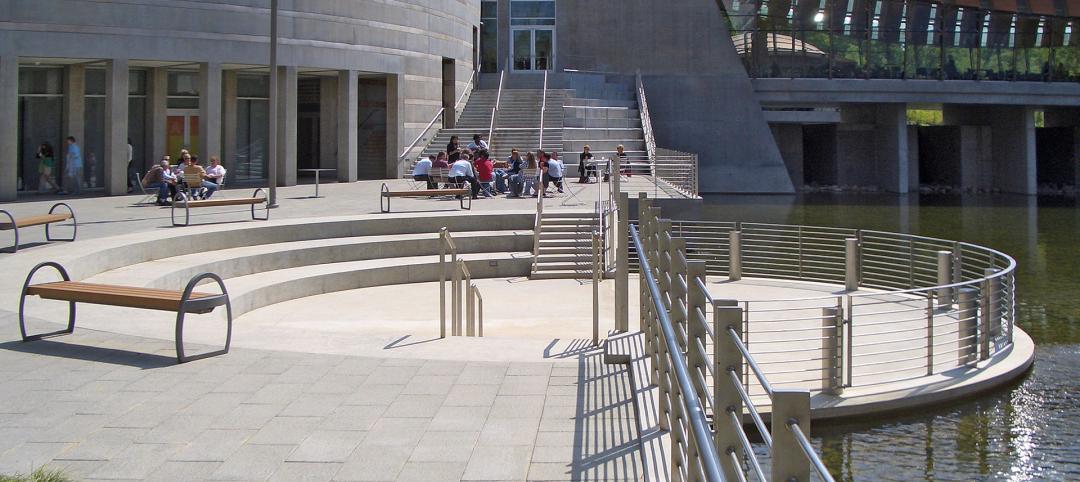WEST LAFAYETTE, Ind. - A partnership of leading earthquake engineering researchers from top U.S. and Canadian universities and design professionals from the steel industry have begun the final phase of a three-year project to increase the seismic safety of buildings that use lightweight cold-formed steel for their primary beams and columns.
Funded by a grant from the George E. Brown, Jr. Network for Earthquake Engineering Simulation Network (NEES), the researchers have already developed a series of computational models to determine how a complete building structure will perform during an earthquake.
Headquartered at Purdue's Discovery Park, NEES is a collaborative, 14-site research initiative that aims to improve structural seismic design and reduce the damaging effects of earthquakes and tsunamis. NEES is funded by a $105 million National Science Foundation grant. NEEScomm is the operations unit at Purdue.
The initial stage in the testing involved the construction of a two-story structure and then testing on a "shake table" at the University of Buffalo. The building will undergo the rigors of a controlled earthquake to determine how it performs. There will be two phases to the shake table testing: Phase One is taking place June 12-14 and will test only the structural components, which include the cold-formed steel skeleton and the OSB (oriented strand board) sheathing for the floor diaphragm and roof; Phase Two will add non-structural components like stairs, gypsum sheathing and interior partitions. The objective is to advance cold-formed steel light-frame design in buildings to the next level and equip engineers to implement these performance-based seismic designs in their projects.
The data from the research is published on NEEShub, the cyberinfrastructure component of the NEES network. The NEEShub platform is powered by Purdue's HUBzero software.
The research team is led by Benjamin Schafer of the Department of Civil Engineering at Johns Hopkins University and a longtime member of two standards-developing committees of the American Iron and Steel Institute (AISI) - the Committee on Specifications and the Committee on Framing Standards. Schafer's team includes additional researchers from Johns Hopkins and Bucknell University, with input from colleagues at the University of North Texas, Virginia Tech and McGill University in Montreal, Canada.
Several steel industry partners are participating in the project, providing technical expertise, donated materials and additional funding. The steel industry partners include the American Iron and Steel Institute, Bentley Systems Inc., ClarkDietrich Building Systems, Devco Engineering Inc., DSi Engineering, Mader Construction Co. Inc., Simpson Strong-Tie Co. Inc., the Steel Framing Industry Association, and the Steel Stud Manufacturers Association.
"We appreciate the valuable technical and economic input that our industry partners have provided," said Schafer, the project's principal investigator.
"This project has already resulted in several innovations that will immediately impact seismic cold-formed steel design standards, making buildings safer," Schafer said. "Now comes the fun part - getting to see how all the research plays out on the shake table. One of the important deliverables from this project will be the transfer of our research results into an open-source software framework. The data will then be made available to engineers, allowing them to see how their structural system designs will respond to an earthquake before they are constructed. This software will create cost efficiencies and potentially save lives."
In fact, project data is already on NEEShub. Preliminary testing conducted on building components (shear walls in particular) have been posted for engineers to examine. Initial uploading of the test data happens immediately after the tests. Fully curated data will happen over the course of this summer.
Schafer said Johns Hopkins graduate student Kara Peterman is on site at the University of Buffalo Structural Engineering and Earthquake Simulation Laboratory (SEESL) and is providing updates on the structure's construction and blog entries at the CFS NEES blog.
Project Background
The award is an outcome of the National Science Foundation 09-524 program solicitation for the George E. Brown, Jr. Network for Earthquake Engineering Simulation Research competition. The title of the project is "NEES-CR: Enabling Performance-Based Seismic Design of Multi-Story Cold-Formed Steel Structures," award number 1041578.
The analysis and initial testing for the project began in late 2010 and took place at John Hopkins University and the University of North Texas. The focus has now moved to the University of Buffalo, where construction of the two-story test building was recently completed. Full-scale shake-table testing is expected to take place in the summer.
About the George E. Brown, Jr. Network for Earthquake Engineering Simulation Network (NEES) at Purdue
Since Oct. 1, 2009, the NEES operations and cyberinfrastructure headquarters has been at Purdue University's Discovery Park, the result of National Science Foundation cooperative agreement #CMMI-0927178. The 14 participating universities hosting NEES laboratories include Cornell University; Lehigh University; Oregon State University; Rensselaer Polytechnic Institute; University at Buffalo, SUNY; University of California, Berkeley; University of California, Davis; University of California, Los Angeles; University of California San Diego; University of California Santa Barbara; University of Illinois, Urbana-Champaign; University of Minnesota; University of Nevada, Reno; and University of Texas, Austin. In addition, 5 institutions involved as administrative partners include: San Jose State University, University of Washington, University of Kansas, University of South Carolina, and the Fermi National Laboratory.
Related Stories
| Dec 15, 2014
Studio Gang tapped for American Museum of Natural History expansion
Chicago-based Studio Gang Architects has been commissioned to design the $325 million Gilder Center for Science, Education and Innovation at the American Museum of Natural History in New York.
| Dec 12, 2014
Dunkin’ Donuts launches certification for green restaurant buildings
The company aims to build 100 new DD Green-certified restaurants by the end of 2016.
| Dec 12, 2014
COBE's striking 'concrete finned' scheme wins competition for Adidas' flagship building in Germany
Danish firm COBE has been announced the winner in a contest to design a new Adidas flagship building in Herzogenaurach, Germany. It beat out 29 other teams, including REX and Zaha Hadid.
| Dec 12, 2014
SOM names winner of One World Trade Center photo contest
Gerry Padden's winning photo offers a striking juxtaposition of the Brooklyn Bridge with the sparkling One World Trade Center tower.
| Dec 11, 2014
2015 Architecture Firm Award goes to Ehrlich Architects
The AIA Architecture Firm Award, given annually, is the highest honor the AIA bestows on an architecture firm and recognizes a practice that consistently has produced distinguished architecture for at least 10 years.
| Dec 11, 2014
Moshe Safdie awarded 2015 AIA Gold Medal
The AIA Gold Medal, voted on annually, honors an individual whose significant body of work has had a lasting influence on the theory and practice of architecture.
| Dec 10, 2014
International Olympic Committee releases first images of new HQ in Switzerland
Designed by 3XN, the new headquarters is located within a park on the shores of Lake Geneva and adjacent to historic Château de Vidy, which has been the iconic home of the IOC.
| Dec 10, 2014
CannonDesign acquires Astorino, forms design-led design-build division
The merger also extends CannonDesign’s presence in the markets Astorino currently serves, namely Pittsburgh and Abu Dhabi.
| Dec 10, 2014
Must see: Babina's latest illustrations cast famous architecture quotes as colorful road signs
Babina has adapted quotes from famous names such as Frank Lloyd Wright, Alvar Aalto, and Mies Van Der Rohe.
| Dec 9, 2014
Steven Holl wins Mumbai City Museum competition with 'solar water' scheme
Steven Holl's design for the new wing features a reflective pool that will generate energy.

















